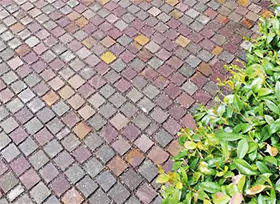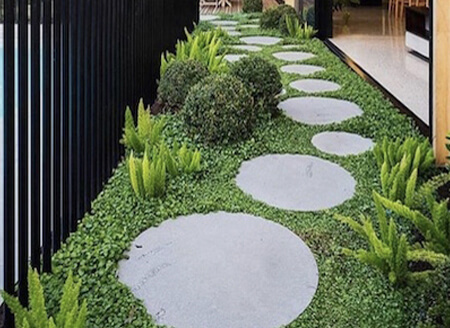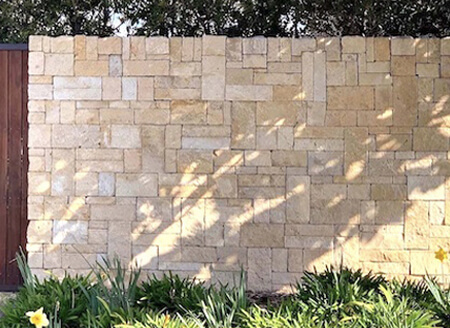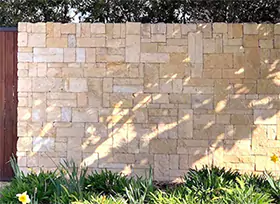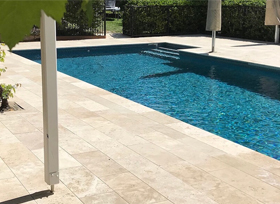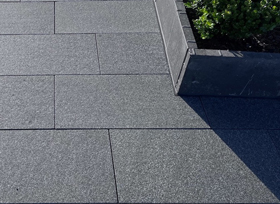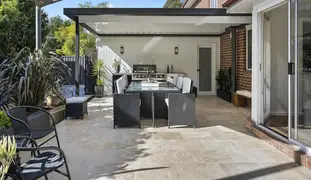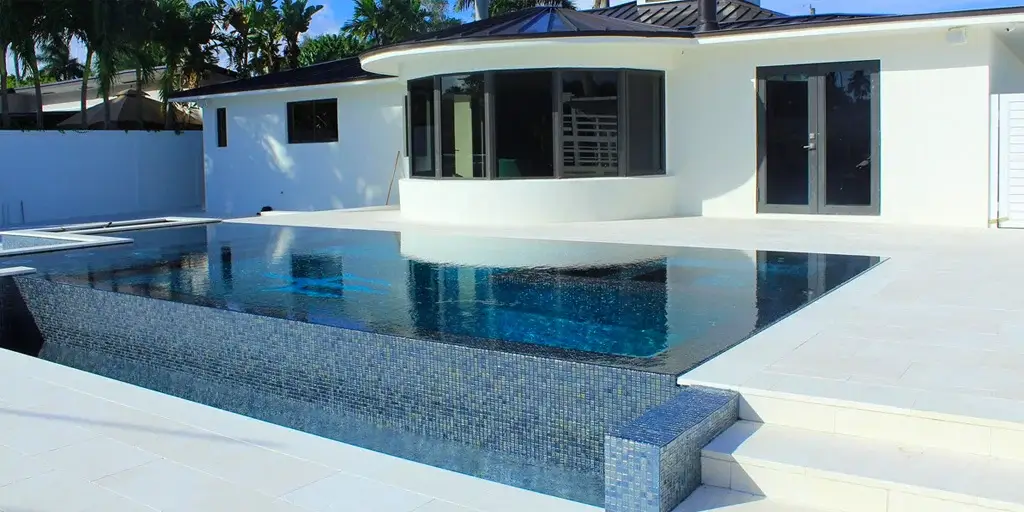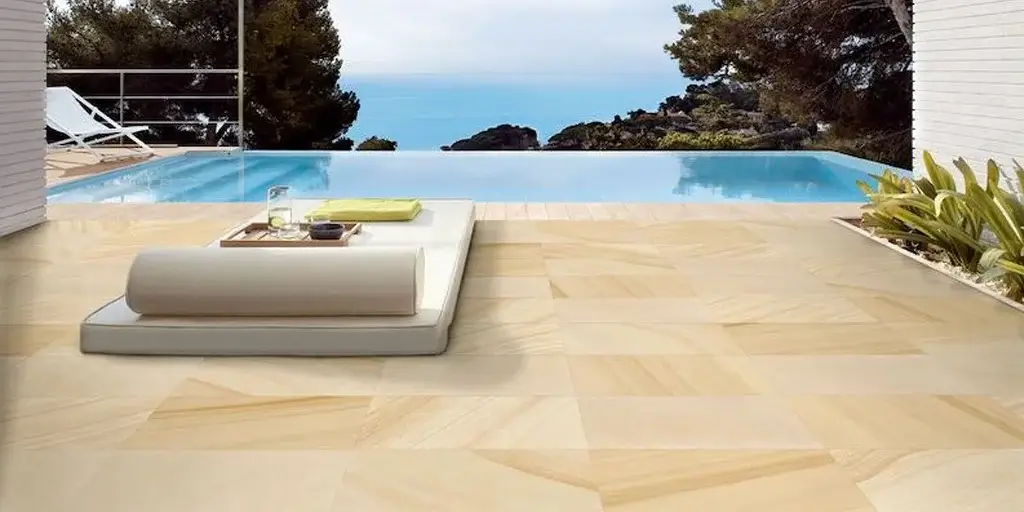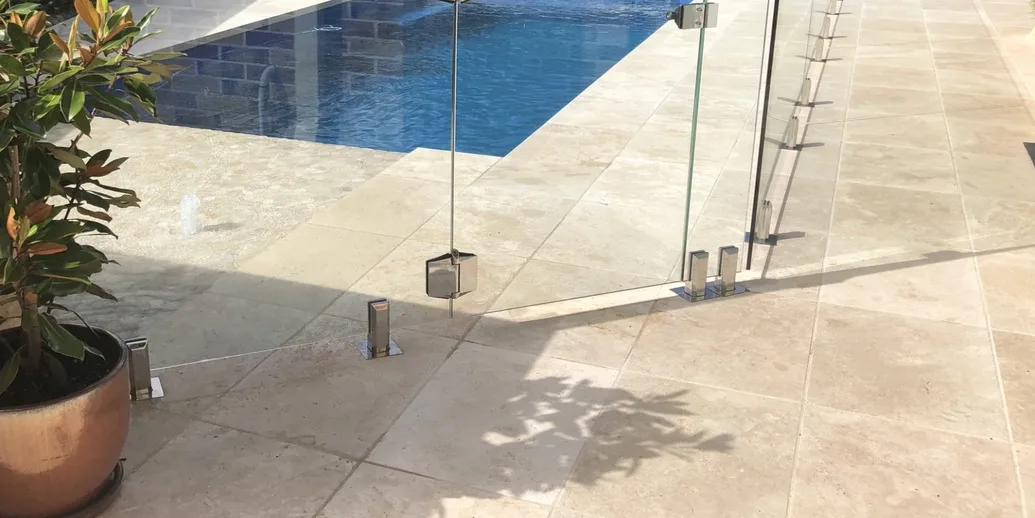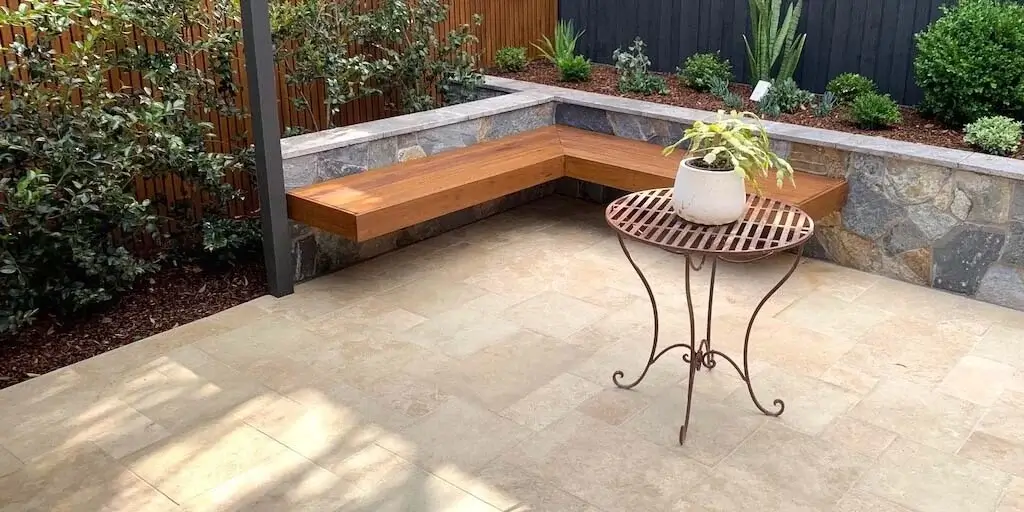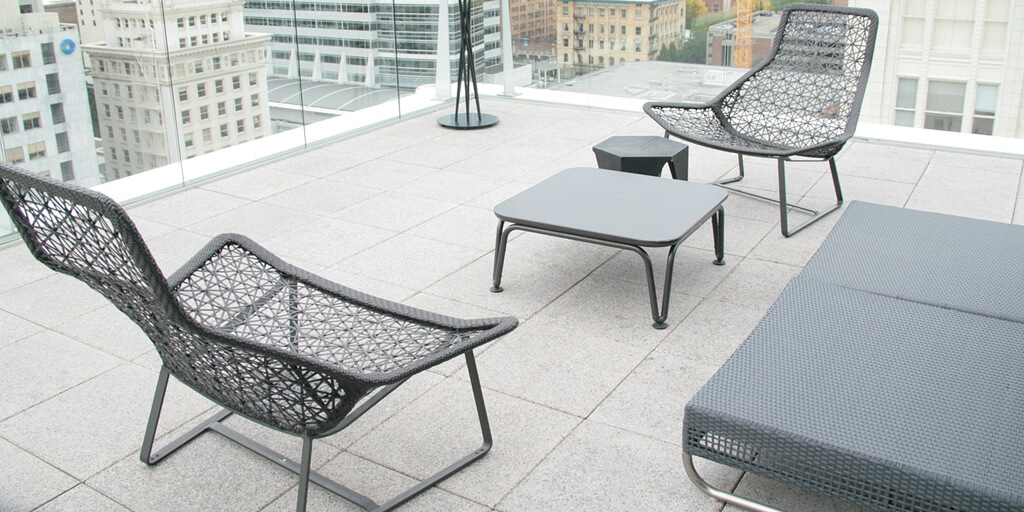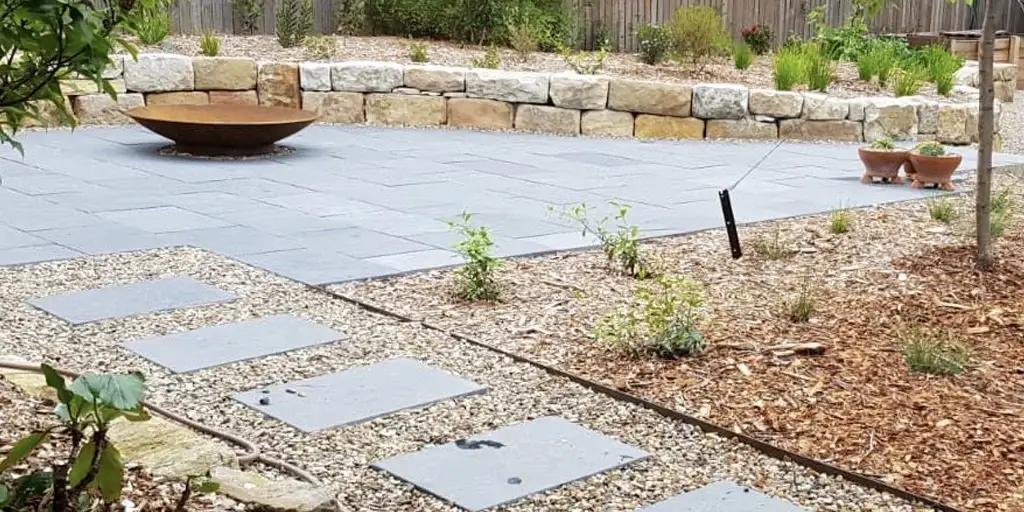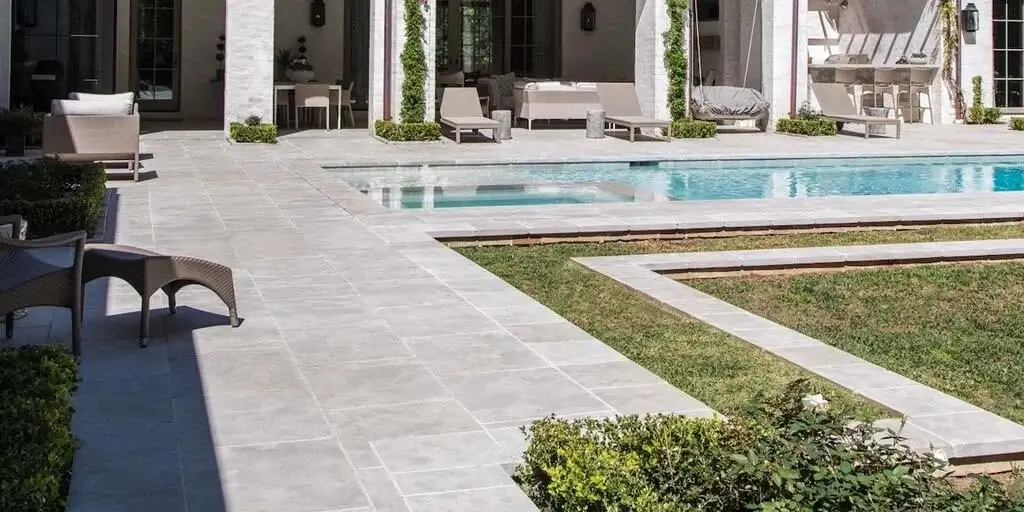You’ve always wanted your garden, complete with magnificent scenery, lush and neatly groomed grass and vivid plants and flowers. Isn’t it?
That sounds like a breathtaking sight. But do you know what might put the finishing touches on your space? Stumbling blocks! These seemingly ordinary stones combine a fantastic vibe with landscape designs to add an expensive touch to your outdoor space.
They have various functional benefits in addition to improving the beauty of your outdoor environment. They provide a world of options with their natural appeal, allowing you to create designs representing your style and ingenuity. Stepping stones are an excellent way to enhance an existing backyard or to construct a whimsical walk through your garden.
This blog will discuss the numerous variables to consider when selecting your garden’s stepping stones. We’ll look at the functional and artistic benefits of stepping stones, such as providing safe and easy walking paths and adding character and charm. We’ll also look at several design plans to improve the overall appearance of your backyard garden or landscape. Let’s get started!
What Are the Advantages of Incorporating Stepping Stones into Your Landscape Design?
Stepping stones are adaptable design elements that can transform your garden into a visually appealing and inviting place. These strategically placed stones provide a variety of practical and aesthetic benefits that improve the overall appeal of your outdoor space.
They give a secure foundation: Stepping stones are commonly used to create a safe walking path through a garden without the risk of trampling fragile plants or crushing grass. Stepping stones provide a secure path through your outdoor settings and easily connect different landscape regions. They provide useful benefits by boosting garden safety and accessibility. Furthermore, they provide firm footing, particularly in uneven or sloppy terrain locations. These garden steppers also aid in preventing slips, accidents and falls, particularly in rainy circumstances.
They improve the aesthetics of your landscape design: Stepping stones strategically placed create beautiful paths and direct guests through different regions of your outdoor space. Their rocky surface is rustic and blends in wonderfully with the surrounding landscape. They also contribute to the definition and structure of the garden design, boosting the overall aesthetics and providing a feeling of direction in your outdoor space.
They provide several design inspirations: Stepping stones can be arranged in a variety of ways to complement a wide range of landscape designs. They can improve gardens of various sizes, from large landscapes to modest backyard getaways. They combine beautifully with small stones or grass and are used to build personalised pathways. Garden steppers can also be readily adjusted, allowing you to customise your garden design to your needs and preferences.
They come in a variety of forms and sizes: Garden Steppers, often known as stepping stones, create eye-catching focus points in your garden. They give beauty and texture to the landscape and come in a variety of shapes, sizes and materials. They assist you in creating magnificent designs, inventive layouts and whimsical patterns that give artistic beauty to your garden. A typical garden may be transformed into a captivating outdoor refuge by adding distinctive and visually appealing stepping stones.
They are used as garden edging to separate different sections: Stepping stones, when appropriately placed, provide a smooth transition between different sections and elements in your garden. They function as borders or edging, separating distinct areas of your space. You may produce a balanced blend of hardscape and natural features in your garden by using different materials and shapes.
Considerations When Choosing Stepping Stones for Your Outdoor Space: Stepping Stones have adaptable design features that improve your outdoor settings’ overall look and utility. However, several elements must be addressed while choosing the right stepping stones to suit your design space and goal.
Determine the purpose of the stepping stones: Stepping stones are used for a variety of reasons. From adding charm and character to functional benefits. They can provide a firm footing on loose ground and improve grip on wet grass. They might, however, be added just for cosmetic purposes.
So, assess your requirements in order to describe the purpose of the stepping stones properly. Consider the size of the space and the overall design style you want to accomplish. Consider foot traffic as well as the locations you wish to connect in your outdoor space. Carbon Black Granite is ideal for high-traffic areas or loose walks that demand firm footing. They are among the most long-lasting natural stone materials.
Choose the best stepping stone material: Stepping stones are made from a variety of materials, each with its own texture, look and qualities. Midnight Glow Limestone is a popular choice because of its eye-catching attractiveness, durability and versatility. It comes in a variety of shapes and has the option of being customised.
Bluestone is another wonderful alternative that adds a delicate and naturalistic aesthetic to your landscape. If durability isn’t as important to you, other possibilities exist, such as concrete or resin-based stepping stones.
Make a plan for the design and arrangement of your garden: The layout or arrangement of your stepping stones can elevate your outdoor décor. You can design a straight walkway or a lovely meandering path across your yard. You must consider the architectural style of your outdoor space, existing hardscaping elements and the surrounding flora and fauna to achieve a beautiful and harmonious design.
Choose rectangular or square-shaped stones with smooth edges for a clean and traditional design. If you want a rustic or natural look, irregular-shaped stones with rough surfaces can add an organic touch. Travertine Crazy Pavers can also be used as stepping stones in your garden to add a stunning rustic appeal that blends with the general colour palette of your environment. You can experiment with small and large pebbles and be as creative as you like. You can get design ideas from gardening periodicals or searching for information online.
Consider the size of your property: Choose stepping stones that are proportional to the size of your garden and the surrounding scenery. Larger rectangular and square stones provide a tougher and bolder vibe, but smaller and irregular stones have a delicate and complex sense. When choosing the distance between the stones, keep walking comfort in mind. However, you should ensure that the stepping stones create patterns and lead to certain regions or focus points in your landscape.
Examine the upkeep requirements of various materials: The care requirements for various natural stones differ. When selecting the right stepping stone for your environment, consider the quantity of maintenance you are willing to undertake. To preserve against staining and weather factors, limestone, sandstone and bluestone require frequent, basic cleaning and periodic sealing. Granite is relatively durable and requires little care other than occasional sealing. However, it may not fit in with your landscape and may be better suited for backyard walks. Consider aspects such as your region’s climate, how much sunlight your area receives and the plants in your space.
Different Stepping Stone Patterns and Layouts to Enhance Your Space: When creating a visually appealing pathway in your outdoor space, the arrangement and placement of the stones are crucial. You may turn a plain path into the most gorgeous feature in your environment by experimenting with different patterns and combinations.
A lovely grid pattern: When you want to create a clean and structured image, the timeless grid pattern is a traditional choice. It entails arranging the stepping stones in a straight and ordered pattern with equal intervals between them. This looks great in any landscape design and gives it a modern feel. This can be improved by utilising different materials or colours for the stones. Our carbon black granite stepping stones are a traditional rectangle shape that creates an eye-catching pattern. Fill small-sized pebbles between the gaps to enhance the beauty of your place.
A casual stone arrangement: Consider randomly putting the stepping stones rather than following a straight line for a more natural and organic look. Your pattern could represent a naturally occurring trail. Use stones of varying sizes, shapes and angles to achieve a more natural look. These patterns look well in cosy gardens or locations with a more rustic appeal. Crazy pavers in Travertine or Sandstone are ideal for achieving this effect.
A lovely, curved walkway: As you move over a huge environment, a curving stepping stone pathway generates a sense of thrill and discovery. They flow in soft curves and mimic the appearance of meandering paths rather than making a deliberate track. This design makes your outdoor space more comfortable, enjoyable and inviting. This works nicely in larger gardens or regions where there is plenty of space.
Stepping stones made from outdoor pavers: Consider using large-size standard outside pavers as stepping stones in a repeating pattern for this design. When combined with rich green grass, it creates an eye-catching and dramatic effect. Install rectangle-shaped pavers at equal intervals. The colour palette of earthy pavers with vivid green grass peeking through the cracks produces a lovely garden design. Use paver stones of varied hues or textures instead of individual stepping stones to provide visual appeal.
Create a stepping-stone staircase: Consider employing stepping stones in a stair-like pattern if your landscape design has a raised elevation. This entails placing the stones in a stepped pattern to create the appearance of a staircase. This is not only a practical technique to climb inclines, but it also adds a sculptural aspect to your outdoor space. This stepping stone staircase can be designed with equal-sized stones for a contemporary look or an irregular pattern for a natural and rustic vibe.
Conclusion
Stepping stones provide a world of creative possibilities for enhancing the beauty of your landscape. To select the stepping stone that best matches your design vision, consider the overall style and aesthetic and the desired look of your outdoor space. Whether you prefer the strength of Granite, the rustic beauty of Travertine and Sandstone or the minimalist style of Limestone, the correct stepping stones will compliment your environment and create pathways that delight and create an inviting atmosphere.
Whether you want to learn more about our stepping stone collection or need help selecting the best material or shape for your location, our specialists are here to help.
*Disclaimer: All information and advice given above in the blog are to the best of our knowledge. Please reconfirm at your end before execution.






